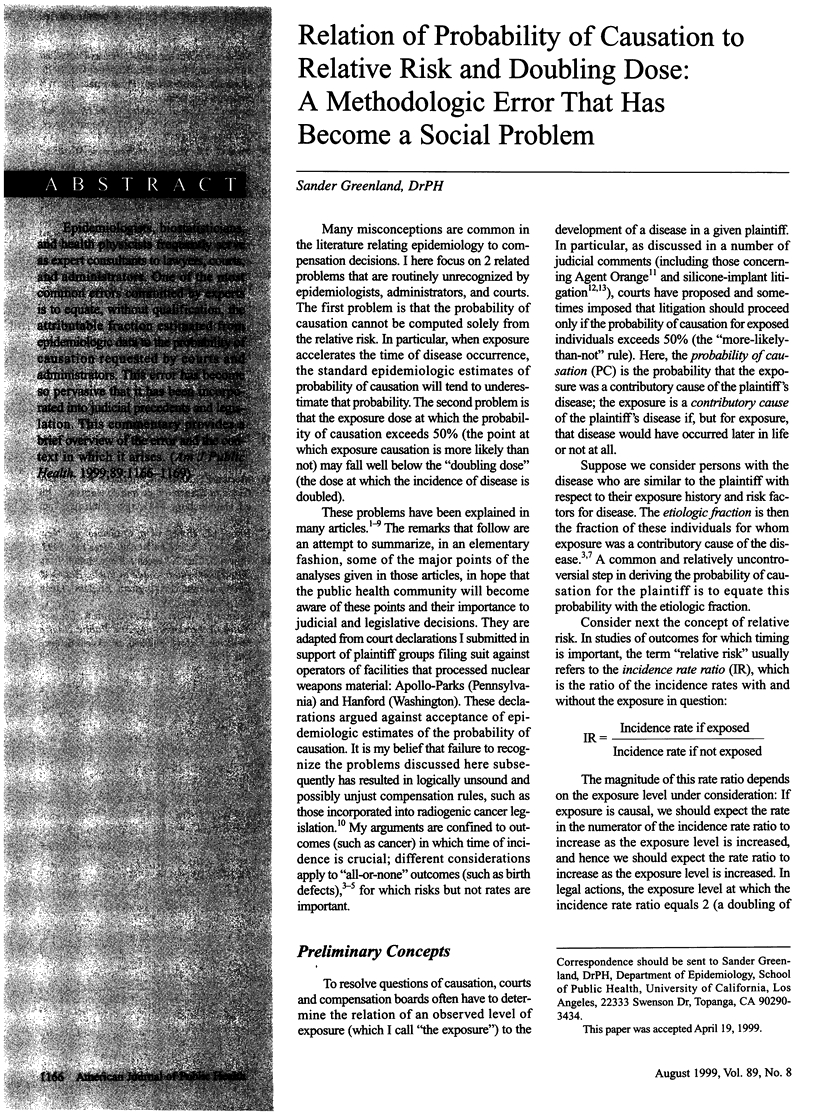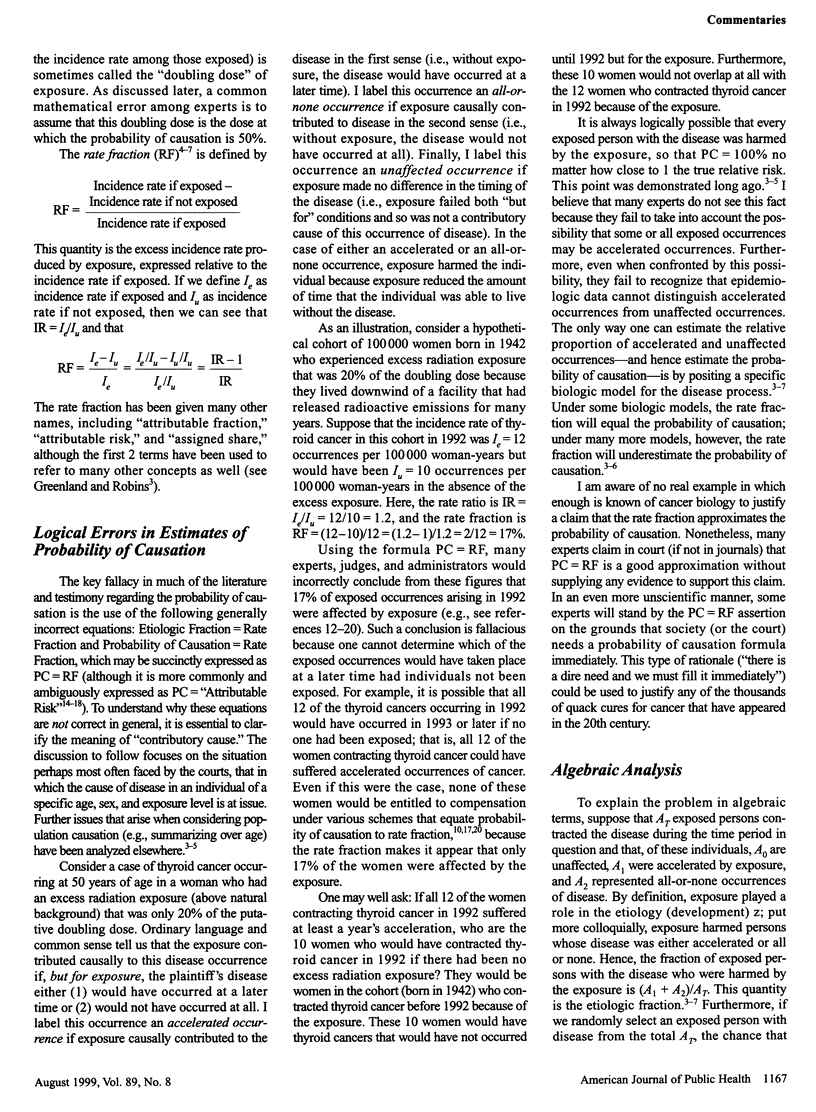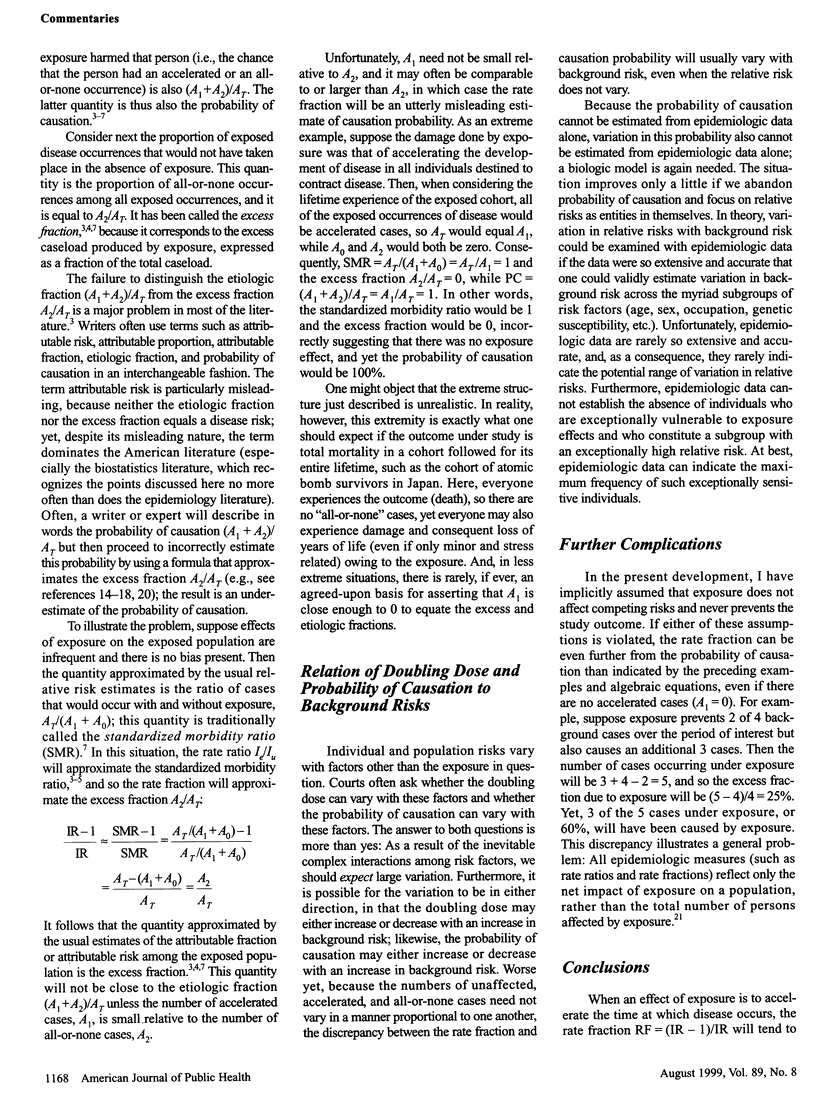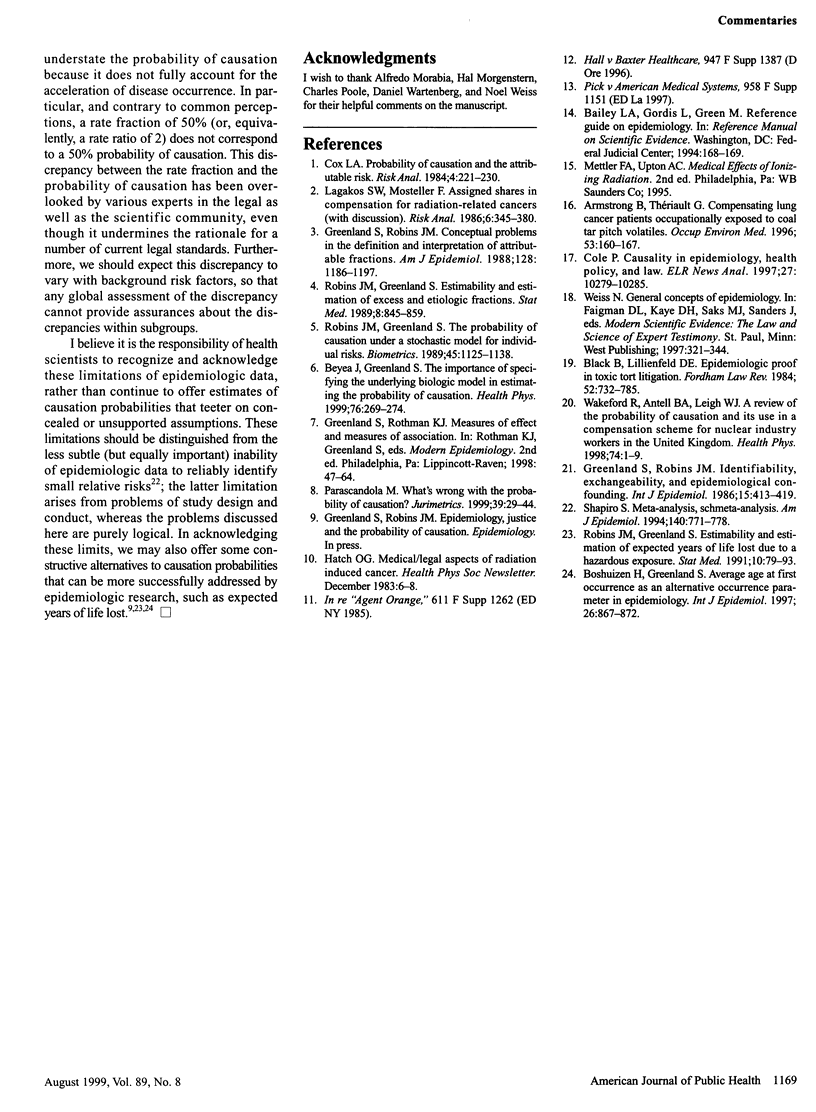Abstract
Epidemiologists, biostatisticians, and health physicists frequently serve as expert consultants to lawyers, courts, and administrators. One of the most common errors committed by experts is to equate, without qualification, the attributable fraction estimated from epidemiologic data to the probability of causation requested by courts and administrators. This error has become so pervasive that it has been incorporated into judicial precedents and legislation. This commentary provides a brief overview of the error and the context in which it arises.
Full text
PDF



Selected References
These references are in PubMed. This may not be the complete list of references from this article.
- Armstrong B., Thériault G. Compensating lung cancer patients occupationally exposed to coal tar pitch volatiles. Occup Environ Med. 1996 Mar;53(3):160–167. doi: 10.1136/oem.53.3.160. [DOI] [PMC free article] [PubMed] [Google Scholar]
- Beyea J., Greenland S. The importance of specifying the underlying biologic model in estimating the probability of causation. Health Phys. 1999 Mar;76(3):269–274. doi: 10.1097/00004032-199903000-00008. [DOI] [PubMed] [Google Scholar]
- Boshuizen H. C., Greenland S. Average age at first occurrence as an alternative occurrence parameter in epidemiology. Int J Epidemiol. 1997 Aug;26(4):867–872. doi: 10.1093/ije/26.4.867. [DOI] [PubMed] [Google Scholar]
- Greenland S., Robins J. M. Conceptual problems in the definition and interpretation of attributable fractions. Am J Epidemiol. 1988 Dec;128(6):1185–1197. doi: 10.1093/oxfordjournals.aje.a115073. [DOI] [PubMed] [Google Scholar]
- Greenland S., Robins J. M. Identifiability, exchangeability, and epidemiological confounding. Int J Epidemiol. 1986 Sep;15(3):413–419. doi: 10.1093/ije/15.3.413. [DOI] [PubMed] [Google Scholar]
- Lagakos S. W., Mosteller F. Assigned shares in compensation for radiation-related cancers. Risk Anal. 1986 Sep;6(3):345–357. doi: 10.1111/j.1539-6924.1986.tb00227.x. [DOI] [PubMed] [Google Scholar]
- Robins J. M., Greenland S. Estimability and estimation of excess and etiologic fractions. Stat Med. 1989 Jul;8(7):845–859. doi: 10.1002/sim.4780080709. [DOI] [PubMed] [Google Scholar]
- Robins J., Greenland S. Estimability and estimation of expected years of life lost due to a hazardous exposure. Stat Med. 1991 Jan;10(1):79–93. doi: 10.1002/sim.4780100113. [DOI] [PubMed] [Google Scholar]
- Robins J., Greenland S. The probability of causation under a stochastic model for individual risk. Biometrics. 1989 Dec;45(4):1125–1138. [PubMed] [Google Scholar]
- Shapiro S. Meta-analysis/Shmeta-analysis. Am J Epidemiol. 1994 Nov 1;140(9):771–778. doi: 10.1093/oxfordjournals.aje.a117324. [DOI] [PubMed] [Google Scholar]
- Wakeford R., Antell B. A., Leigh W. J. A review of probability of causation and its use in a compensation scheme for nuclear industry workers in the United Kingdom. Health Phys. 1998 Jan;74(1):1–9. doi: 10.1097/00004032-199801000-00001. [DOI] [PubMed] [Google Scholar]


